Second Consul, Arch-Chancellor of the Empire, Duke of Parma
Pronunciation:
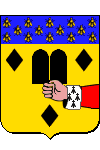
Jean-Jacques Régis de Cambacérès was born on October 18, 1753 in Montpellier, Languedoc (South France) into a family of magistrates who belonged to the city's legal nobility. He studied law in the city and became a lawyer at 18.
A Councillor in Montpellier's Court of Accounts and Finances under the Ancien Régime, he failed to win election to the Estates-General of 1789. Instead, he became President of the Criminal Tribunal of Hérault and then the Department's representative at the National Convention in 1792.
At the Convention, he displayed remarkable ability and sound judgement - voting for the King's death as a suspended sentence - which positioned him as a national leader after 9 Thermidor (French Republican calendar; July 27, 1794 in the Gregorian calendar). After having spent a lengthy period as President of the Legislative Committee, he joined the Committee of Public Safety becoming President, a position that hadn't existed before him. It was at this point that he encountered the young Bonaparte in a meeting that left him captivated.
In 1795, he was elected to the Council of Five Hundred though his moderation cost him a Directorship. He became Minister of Justice on July 20, 1799 with the support of Emmanuel-Joseph Siéyès of whose plans for a coup d'état he completely approved. It came as no surprise when Napoleon Bonaparte made him Second Consul on 18 Brumaire (November 9, 1799) after the plans for the coup had been finalized at a dinner he had hosted the night before.
Hippolyte Taine described Cambacérès as somewhat intelligent
but possessing uncommonly good sense and unflinching loyalty to the First Consul
. He played an important role in drawing up the Concordat with the Holy See - opposing Joseph Fouché and Charles-Maurice de Talleyrand-Périgord on this matter - and the Civil Code. He presided over 50 of the 102 sessions devoted to this work and provided Napoleon Bonaparte with background material when he assumed the committee presidency. He also successfully intervened to smooth over the disagreements that occasionally arose between the First Consul and the Tribunat or the Legislature (Corps législatif).
On 27 Floréal, Year XII (May 17, 1804) as President of the Senate, he presented Napoleon Bonaparte with the senatus consultum that made him Emperor of the French. The same day, Cambacérès was named Arch-Chancellor of the Empire, a largely ceremonial position, but one that made him in theory the second highest-ranking official of the State.
As a Grand Dignitary of the Empire, he was also a senator, Councillor of State, a member of the Privy Council and of the Grand Council of the Legion of Honour. In an attempt to control Freemasonry in 1806, Napoleon named him Sovereign Grand Commander of the Supreme Council of France in the Ancient and Accepted Scottish Rite instead of Auguste de Grasse-Tilly.
On March 1, 1808, he received the titles of Prince and Most Serene Highness. On March 19, he became Duke of Parma.
Until the end of the Empire, Cambacérès was consulted on all questions of national importance, even when his advice was not followed. Significantly, he was reluctant to support the Spanish War and the Russian Expedition. He also advised Napoleon to marry Alexander I's sister rather than Marie-Louise, predicting a war within two years with the Emperor whose relation he did not marry.
He also frequently intervened in the private family affairs of the Bonapartes: reconciling Napoleon I and Lucien, his brother; calming the mutual jealousy between Caroline, Pauline and Elisa; serving as intermediary between Joséphine and her ex-husband after the divorce; and fulfilling the function of a state official at the marriage of Napoleon and Marie-Louise.
During the Emperor's frequent absences from the Senate, it was Cambacérès who replaced him as President. In the chamber, he worked tirelessly to demand more soldiers for the Emperor's armies according to Napoleon's explicit orders.
In 1814, he presided over the Regency Council that was instituted on January 24. While Joseph Bonaparte was officially Lieutenant-General of the Empire, Cambacérès remained in reality the principal adviser to the Empress-Regent.
Nonetheless, on April 7 he was among the first to accept the provisional government and the fall of Napoleon.
During the first Restoration, he led a quiet life in Paris only re-entering public life when the bodies of Louis XVI and Marie-Antoinette were transferred to the Basilica of Saint-Denis.
During the Hundred Days, though he was forced to accept the functions ofF Arch-Chancellor to which were added the responsibilities of Minister of Justice, he refused to act in any official capacity.
This did not prevent Louis XVIII, upon his return, from exiling Cambacérès for regicide. He lived in Brussels until 1818 when he was allowed to return to France.
He died in Paris on March 8, 1824 and is buried in the 39th division of the Père Lachaise Cemetary .
"Jean-Jacques Régis de Cambacérès, Duke of Parma" by Henri-Frédéric Schopin (Lubeck 1804 - Montigny 1880 or 1881).
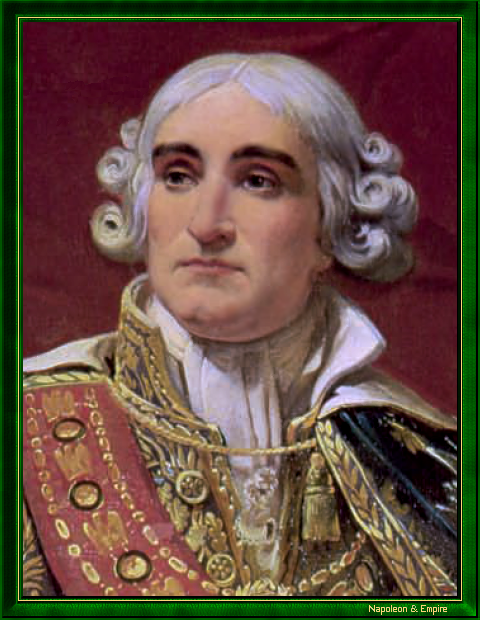
He was renown for his vanity - his Paris residence was identified in gold letters with the words "Residence of His Most Serene Highness the Duke of Parma" -, his extravagant clothing and his obsession with decoration which made him the laughing stock of the capital despite his position, his talents and his famous diners (his table is said to have been the best in Paris).
Freemasonry: Jean-Jacques Régis de Cambacérès was initiated at the "Loge Ancienne et de la Réunion des Élus" ("Ancient Lodge and Meeting of the Elected") in Montpellier. He became Worshipful Master of the "Saint-Jean de la Grande Maîtrise" ("Saint John of the Grand Master") in Paris and then Grand Master of the Grand Orient of France.
Address
5, Rue de l'Ancienne Comédie. 6th Arrondissement, Paris
This was where Cambacérès lived before becoming Arch-Chancellor.246, Boulevard Saint-Germain. 7th Arrondissement, Paris
This property, named the "Hôtel de Roquelaure", was constructed in 1722 for the Marshal de Roquelaure who sold it in July 1740 to Mathieu-François Molé, the first President of the Parliament of Paris. Seized in 1793 upon the arrest of the owner (who would be guillotined the next year), the property was returned to the Molé family in 1796. In 1808, Jean-Jacques Régis de Cambacérès acquired the residence as well as the "Hôtel de Lesdiguères" which is attached. He lived here until his exile in 1816 when he sold it to the Duchess de Penthièvre, widow of Philippe-Égalité and mother of the future King Louis-Philippe I.21, Rue de l'Université. 7th Arrondissement, Paris
In 1816, Cambacérès bought this more modest property, dating from 1639, from Count Antoine-François Andréossy and liver there after his return from exile in 1818 until his death in March 1824.Château de Saint-Drézéry. Department of Hérault
Cambacérès also owned these lands, close to his native city, beginning in 1791.Acknowledgements
Other portraits
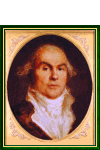
Enlarge
"Jean-Jacques Régis de Cambacérès" by Jean-Baptiste Greuze (Tournus 1725 - Paris 1805).
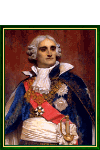
Enlarge
"Jean-Jacques Régis de Cambacérès, Duke of Parma, Arch-Chancellor of the Empire". Nineteenth century French school.
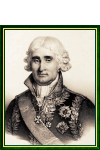
Enlarge
"Jean-Jacques Régis de Cambacérès, Arch-Chancellor of the Empire". Engraving by François-Séraphin Delpech (Chaillot 1778 - Paris 1825).